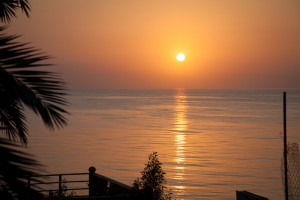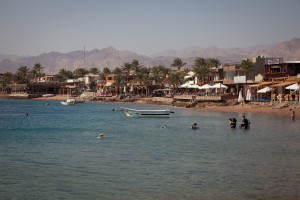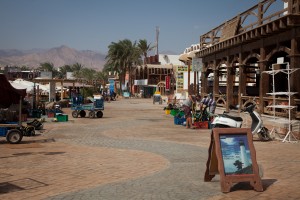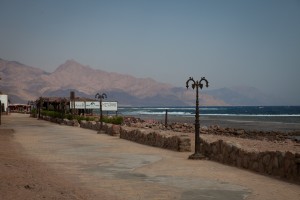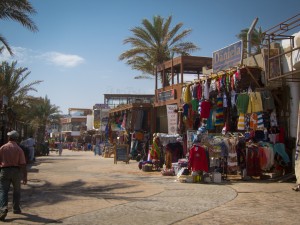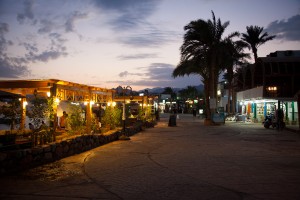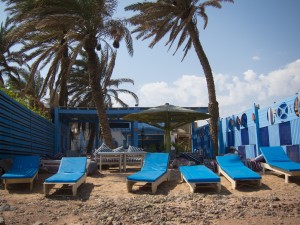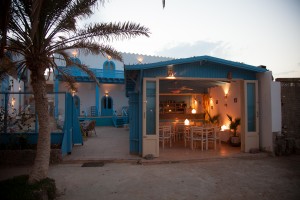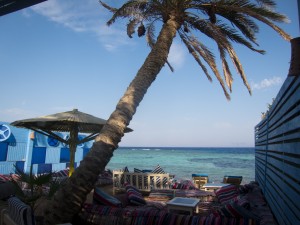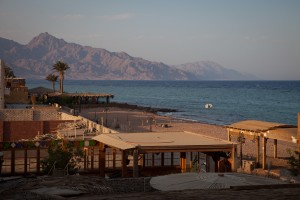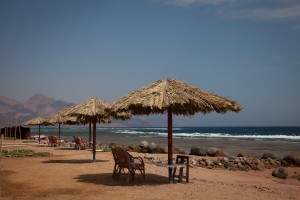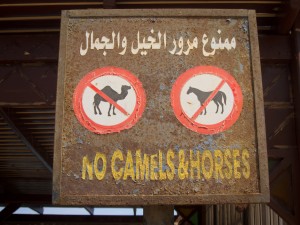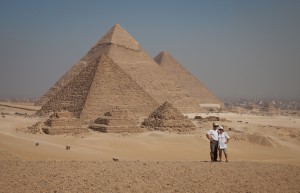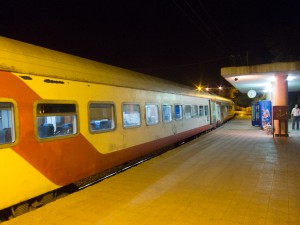 The distance between Dahab, Egypt and Petra, Jordan is a mere 210 km as the crow flies. But we weren’t travelling as the crow flies; no, we were taking a bus to Nuweiba, a ferry from Nuweiba to Aqaba and a taxi from Aqaba to Petra. Our bus from Dahab was scheduled to leave at 10:30 on Thursday morning, and we estimated a conservative arrival time of about 5:00 pm, giving us plenty of time to settle into our hostel before heading out to visit Petra at night, something that is permitted only twice a week (Thursday and Monday nights). This is how our day unfolded.
The distance between Dahab, Egypt and Petra, Jordan is a mere 210 km as the crow flies. But we weren’t travelling as the crow flies; no, we were taking a bus to Nuweiba, a ferry from Nuweiba to Aqaba and a taxi from Aqaba to Petra. Our bus from Dahab was scheduled to leave at 10:30 on Thursday morning, and we estimated a conservative arrival time of about 5:00 pm, giving us plenty of time to settle into our hostel before heading out to visit Petra at night, something that is permitted only twice a week (Thursday and Monday nights). This is how our day unfolded.
 We arrived at the Dahab bus station by 10:00, giving us plenty of time to purchase our tickets (15 EGP each). Our bus departed at about 11:15 am, 45 minutes late. Enroute to Nuweiba, we were stopped at a security checkpoint where an armed policeman boarded the bus and asked all passengers to present their identification. There was only about six tourists on board, the rest of the passengers were locals. One guy was hauled off the bus for reasons unbeknownst to us, delaying us for half an hour, which put us into Nuweiba at about 12:30. We weren’t too worried as we believed the ferry didn’t leave until 3:00 pm so we had plenty of time to buy our tickets, go through customs and get on board.
We arrived at the Dahab bus station by 10:00, giving us plenty of time to purchase our tickets (15 EGP each). Our bus departed at about 11:15 am, 45 minutes late. Enroute to Nuweiba, we were stopped at a security checkpoint where an armed policeman boarded the bus and asked all passengers to present their identification. There was only about six tourists on board, the rest of the passengers were locals. One guy was hauled off the bus for reasons unbeknownst to us, delaying us for half an hour, which put us into Nuweiba at about 12:30. We weren’t too worried as we believed the ferry didn’t leave until 3:00 pm so we had plenty of time to buy our tickets, go through customs and get on board.
The bus dropped us off at the Nuweiba Bus Station and we walked towards the sea where we assumed (correctly) we would find the port. It took a little wandering about amongst the filthy streets of Nuweiba before we found the ticket office that was well signed, except only in Arabic. The foreigner price for ferry passage is a steep $75US, or 940 EGP for two tickets. At least we were taking the fast ferry that should get us across in about an hour.
 Garbage in front of the entrance to the port. Sadly, this
Garbage in front of the entrance to the port. Sadly, this
was not an uncommon sight in Egypt.
 The place to buy ferry tickets. All signs were Arabic
The place to buy ferry tickets. All signs were Arabic
making it difficult to figure out where to go.
After clearing customs without any issues, in spite of having over extended our Visa by about a week (well within the 15 day grace period), we joined a small group of foreigners in a decrepit, filthy waiting area about the size of a football field. There was a group of five older ladies who we discovered were also Canadian, two Australian men, one woman from the UK but who is living in Cairo, and one young man born in Israel but currently living Berlin. We had plenty of time to kill, so why not get to know our travelling companions? The Canadian ladies were travelling as part of an organized tour. Michelle, the UK lady from Cairo, told me she had been robbed the night before and lost all her valuables, except her passport. She was meeting her fiance in Jordan, who had arranged her passage from Jordan. I shared with her my food and drink as she had no money to buy any provisions. We didn’t get to know the guys from Australia quite yet, but the young lad from Berlin, Benyamin, befriended us and decided to hang out with us for the rest of the journey.
At about 2:30 pm, we were transferred by bus over to the ferry, about a kilometre away where we now lined up – men in one line, women and children in the other – and waited for another half an hour, under the scorching sun. Finally, we were allowed to board only to be detained in the car cargo area for another hour. At least we were out of the sun. When we were permitted to go upstairs, we figured we would be leaving at any moment. Wishful thinking! At the Jordanian Customs desk on board, we reluctantly surrendered our passports so that they could be processed, and visas issued when we landed in Jordan.
 As the sun set over the mountainous horizon, our hopes for visiting Petra that night began to fade as quickly as the fading light. What could be causing our delay? Turns out we were waiting for the drivers of the transport trucks that were being loaded onto the cargo ferry next to us all afternoon. For whatever reason, the drivers could not accompany their trucks, they had to board the passenger ferry with the rest of us. At 6:30 pm, we finally headed out and didn’t arrive in Aqaba until 9:30 pm. So much for the fast sailing. There was a time change as well, so now it was really 10:30 at night.
As the sun set over the mountainous horizon, our hopes for visiting Petra that night began to fade as quickly as the fading light. What could be causing our delay? Turns out we were waiting for the drivers of the transport trucks that were being loaded onto the cargo ferry next to us all afternoon. For whatever reason, the drivers could not accompany their trucks, they had to board the passenger ferry with the rest of us. At 6:30 pm, we finally headed out and didn’t arrive in Aqaba until 9:30 pm. So much for the fast sailing. There was a time change as well, so now it was really 10:30 at night.
I hate arriving in a place in the dark, especially when we don’t have transportation lined up in advance, as was the case in Aqaba. When we collected our passports, we were pleasantly surprised that we didn’t have to pay for our Visas (usually 20 Jordanian dinari each which is about $30 CAD). Apparently, Aqaba is a “free zone” which means you can come and spend your money in the city for 48 hours without having to pay for a visa.
On arrival, the Canadian ladies were met by their tour guide and were whisked away for a night in Aqaba. Michelle’s fiance was waiting for her at the exit. The remaining foreign passengers – the two Australians, Benyamin and us – were all going to Petra so we decided to stick together to find transportation. Of course, as we exited the port building, the taxi drivers were right there waiting to pounce. These guys were really aggressive. There were only two taxis in the parking lot each with a very small car, charging 60 EGP each, more than double what the going rate should be. There was another guy who offered us a mini bus for 70 EGP, but it turns out he didn’t even have a car of his own. He was just brokering on behalf of the taxi drivers who didn’t speak English very well.
Things got a little heated when Benyamin called one of the taxi drivers a liar and a crook. These guys were yelling at us, as if the louder they talked, the better their deal would seem to us. Michelle and her fiance came by and offered to take us all downtown to get a better taxi, but we wouldn’t all fit in their car. The taxi drivers were enraged that we might go with them, and went off to fetch the police. Turns out Michelle’s fiance was friends with both of the police officers, so much to the taxi drivers’ dismay and my relief, they didn’t do anything.
Finally, we decided we would walk to a main road where we had hopes of finding a taxi that wouldn’t rip us off. The only problem was we didn’t know where the hell we were or how far it was to the centre of town,. And it was getting late, about 11:15 pm by now.
As we started to walk, one taxi driver drove up ahead and then stopped in front of us, blocking our path, insisting we must take his taxi. Then the old guy in the minibus and the taxi broker did the same thing. We said we would take the minibus for 60 EGP, which we knew was a fair price. No, the broker insisted the price was 70 EGP. I think everybody was getting a little hot headed, because after doing the math, we were dickering over a mere three bucks each extra. But, it seems everybody was digging in their heels leaving no room for common sense.
We kept walking, and then the mini bus driver came up beside us, without the broker, and agreed to 60 EGP, so we piled in and headed off to Petra. We were surprised that it took another 2 hours to get there as we were under the erroneous impression Petra was only 30 minutes away. Our driver contacted our hostel to get directions and to let them know we would be arriving late. The three guys didn’t even have a room booked for the night, so they were very lucky to learn that our hostel had a cancellation on a triple room, so at least they had somewhere to sleep.
The bus pulled up in front of our hostel at 2:00 am. It took us 16 hours to travel 210 km! But it was well worth it, as we discovered the next day when we visited Petra.





